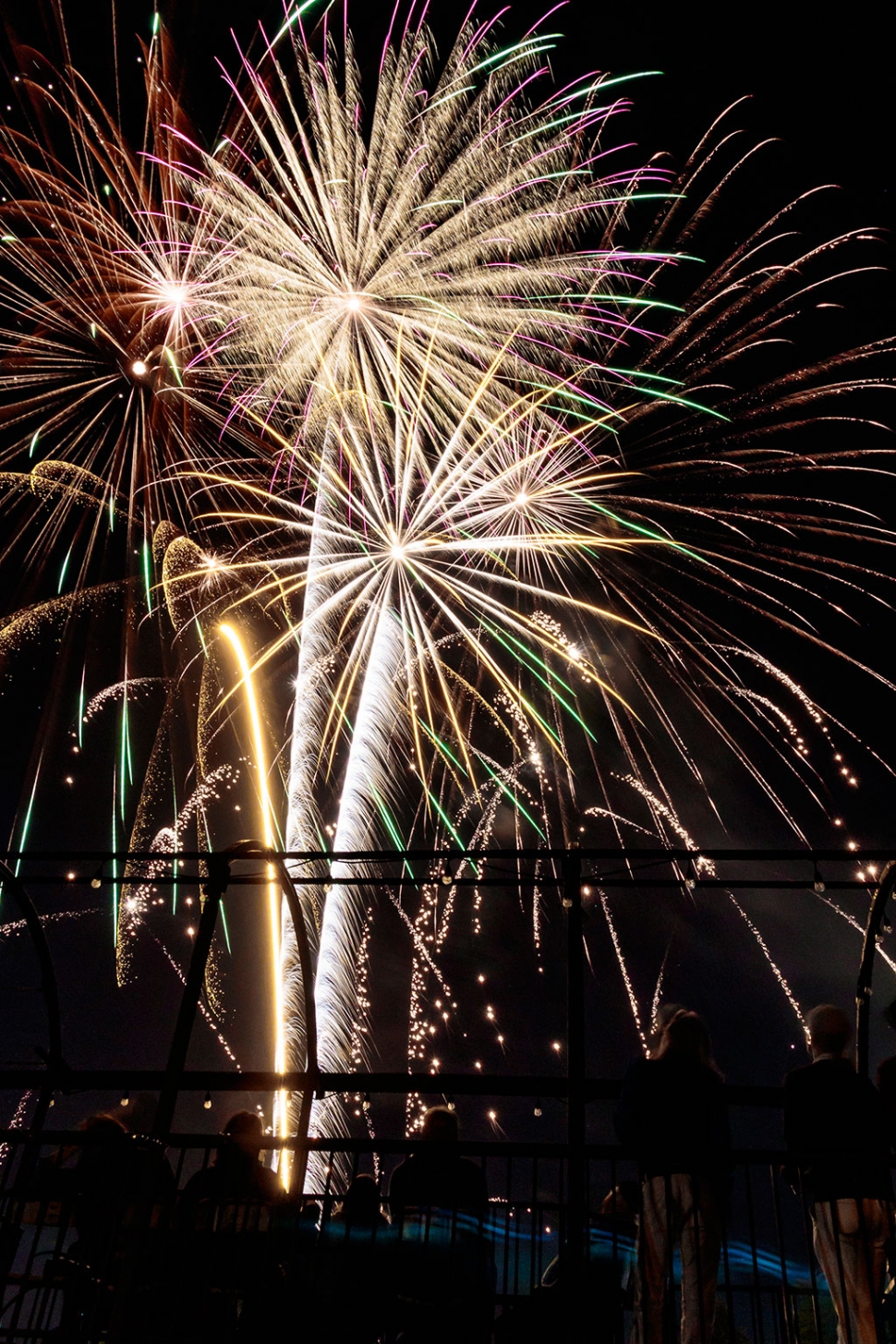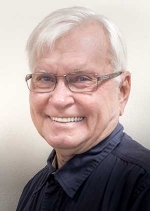|
Focus on Photography
 Photo of the Week "Fireworks!" By Bob Crum. Photo data: Canon 7DMKII camera, bulb mode, ISO 400, Tamron 16-300mm lens with 0.6 ND filter, aperture f/11, exposure 14 seconds. By Bob Crum — Wednesday, July 18th, 2018
Exposures exposed
 Bob Crum I've been shooting the Fillmore fireworks show for about 87 years, so it seems. In years past, I noticed that bright bursts are, you know, too bright resulting in blown out highlights. No big deal considering there isn't any detail in bright light blobs. But super bright lights tend to overpower the image. Attempts to cool down the highlights in post processing just make the highlights an ugly shade of gray. I'd like a better balance of the bright light and colors while executing longer exposures. So what to do? A Ventura friend photographer suggested installing an ND filter on the lens. Hmm. An ND filter reduces light coming into the lens like sunglasses for your eyes. Why do that? Because theoretically reducing light entering the lens allows for longer exposures without overexposure. BTW, works wonderfully for photoing mermaids frolicking in squally seas. I decided to use a 0.6ND on my Tamron 16-300mm lens which will reduce the exposure equivalent to 2 f/stops. One disadvantage of using an ND filter is that it darkens what you see through the viewfinder rather dramatically. Worse, depending on the filter used auto-focus may not work. However, neither issue was a problem regarding fireworks photography. I simply used the camera's live view (LCD screen) to initially compose the images and used manual focus with the lens set at infinity. The only problem is that live view goes dark the instant the shutter is actuated so can't tell what is being recorded. Hello guesswork! The overall range of my firework exposures is from 3 to 14 seconds for a reason described below. Did the 0.6 ND filter accomplish the anticipated results? Yes with an unexpected benefit. The foreground is better exposed from the ambient light the result of longer exposures. A delightful bonus. Love surprises! It's important because what are fireworks for if not to be observed? So, from my perspective, adding people in the foreground provides some 'show' context. Knowing that a train with people on open-air flat cars will be parked near the firing stage, I took a position between the train and Old Telegraph Rd. Viola... people and fireworks thanks to the ND filter. Now, about the long 3 to 14 second exposures. A single firework burst is not by itself necessarily impressive. On the other hand, two or three bursts in a single frame... now that's exciting! I could shoot single bursts and create composites afterward. Composites are simply the blending of two or more images to create one final image. While this definition makes compositing sound quick and easy, it’s anything but, often times requiring several hours of editing work to complete. I don't have the luxury of time to create composites. So I go rogue and improvise. When the first firework is fired into the air, I open the shutter... and hold it open (in bulb mode) for the duration of two or three firework bursts. This is like creating a composite in the camera. Much quicker to do it in camera... another reason for the ND filter. Now you know a craft secret. Shhh. See the fireworks slide show video featuring John Wayne and Kate Smith: https://youtu.be/aggnhfHH5Gk Happy photoing. Send comments, questions or suggestions to: photography@earthlink.net |
